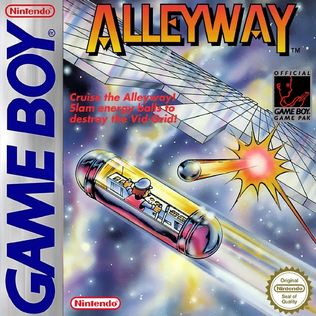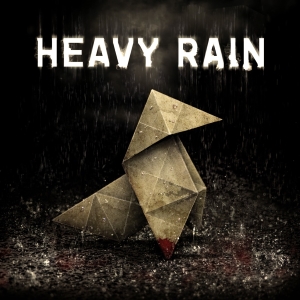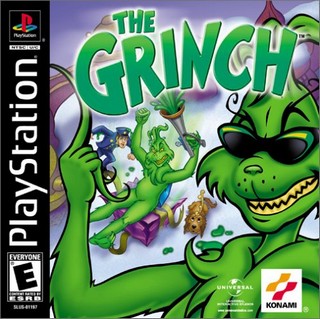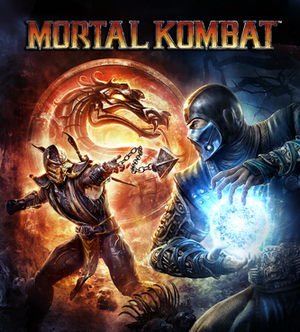
Max Payne is a 2001 third-person shooter game developed by Remedy Entertainment. It was originally released for Windows by Gathering of Developers in July 2001, and was later ported by Rockstar Games to the PlayStation 2 and Xbox in December 2001, and by MacSoft and Feral Interactive to Mac OS X in July 2002. A version of the game for the Game Boy Advance, featuring an isometric perspective but retaining most of the original's gameplay elements, was released by Rockstar in December 2003, and an enhanced port for mobile devices was published in 2012 to coincide with the release of Rockstar's Max Payne 3. A Dreamcast version of the game was also planned, but was canceled due to the discontinuation of the console in 2001. Max Payne was also made available on Xbox 360 as part of Xbox Originals program in 2009, on PlayStation 3 as a PS2 Classic in 2012, on PlayStation 4 in 2016, and on Xbox One and Xbox Series X/S in 2021, due to the consoles' respective backward compatibility and emulation features.

Alleyway is a 1989 video game developed by Nintendo and Intelligent Systems and published by Nintendo as a global launch title for the Game Boy. It is a Breakout clone and one of the first four games developed and released for the system. The game was released first in Japan in 1989, in North America later that year, and in Europe in 1990. It was later re-released for the Nintendo 3DS Virtual Console in June 2011.

Castlevania: Lament of Innocence is an action-adventure video game developed by Konami Computer Entertainment Tokyo and published by Konami for the PlayStation 2 console. Part of Konami's Castlevania video game series, it is the first installment of the series on the PlayStation 2 and the third to make use of a 3D style of gameplay. It was released in Japan and North America in late 2003 and Europe and Australia in early 2004.

Septerra Core: Legacy of the Creator is a role-playing video game developed by Valkyrie Studios and published by Monolith Productions. It was originally released in 1999 for Windows; since then, it has been re-released via GOG.com for Windows in 2009, for OS X in 2013, and for Linux in 2017.

Castlevania: Harmony of Dissonance is a 2002 action role-playing game developed by Konami Computer Entertainment Tokyo and published by Konami for the Game Boy Advance. Part of Konami's Castlevania video game series, it is the second installment of the series on the Game Boy Advance. It was released in Japan in June 2002, in North America in September 2002, and in Europe in October 2002.

Klonoa is a platform video game series created by Namco in 1997. It stars Klonoa, an anthropomorphic creature who explores dream worlds. The series includes two main games: Klonoa: Door to Phantomile (1997) for the PlayStation and Klonoa 2: Lunatea's Veil (2001) for the PlayStation 2. A remake of Door to Phantomile was released for the Wii in 2008, and remasters of both games were released in 2022. The series also includes a set of handheld games released between 1999 and 2002 for the WonderSwan and Game Boy Advance.

Rayman 3: Hoodlum Havoc is a 2003 platform game developed and published by Ubisoft, and the third major installment in the Rayman series. It follows Rayman in his quest to stop André from taking over the world with his army of hoodlum soldiers. It was released for the GameCube, PlayStation 2, Xbox and Microsoft Windows, and on OS X by Feral Interactive in 2004. It was also released for the Game Boy Advance, N-Gage and mobile phones as a 2D platformer.

Ultimate Spider-Man is a 2005 action-adventure game based on the Marvel Comics character Spider-Man and the comic book of the same name. The game was published by Activision for the Windows, GameCube, PlayStation 2, Xbox, Nintendo DS, Game Boy Advance. The PlayStation 2, GameCube and Xbox versions were developed by Treyarch and are drastically different from the handheld versions, which were developed by Vicarious Visions. The Windows version is a port of the home console versions, developed by Beenox. A version for mobile phones was also developed and published by Mforma. A Limited Edition of the game was released for the PlayStation 2, and includes additional content such as a "making of" documentary and an interview with Spider-Man co-creator Stan Lee.

Rayman Raving Rabbids is a 2006 party video game developed and published by Ubisoft. The game is a spinoff in the Rayman series. The game consists of 75 minigames. The game was released for the PlayStation 2, Wii, Xbox 360, and Microsoft Windows systems, with a different version released for Game Boy Advance, Nintendo DS and mobile phones. Versions for GameCube, Xbox, PlayStation 3, and PlayStation Portable were planned, but were later cancelled.

Arthur and the Invisibles is three video games based on the 2006 French film Arthur and the Minimoys by Luc Besson. It retained the original name of the movie in Europe. The game involves Arthur and his two friends, Selenia and Bétamèche, on their mission to save the Minimoys' world from destruction. The game incorporates Besson's Minimoy universe and its inhabitants.

Heavy Rain is a 2010 action-adventure video game developed by Quantic Dream and published by Sony Computer Entertainment. The game features four protagonists involved with the mystery of the Origami Killer, a serial killer who uses extended periods of rainfall to drown his victims. The player interacts with the game by performing actions highlighted on screen related to motions on the controller, and in some cases, performing a series of quick time events. The player's choices and actions during the game affect the narrative.

Scooby-Doo! Classic Creep Capers is an adventure game published by THQ for the Nintendo 64 and Game Boy Color, based on the Hanna-Barbera cartoon Scooby-Doo, Where Are You!. The Nintendo 64 version, developed by Terraglyph Interactive Studios, was released in November 2000, while the Game Boy Color version was developed by Digital Eclipse Software, and released in February 2001. A PlayStation version, identical to the Nintendo 64 version, had been in development by Terraglyph Interactive Studios but was later cancelled.

Baldur's Gate: Dark Alliance is a 2001 action role-playing video game developed by Snowblind Studios and published by Interplay Entertainment subsidiary Black Rock Studios for the PlayStation 2 and the Xbox consoles, with High Voltage Software handling the GameCube port, and Magic Pockets developing the Game Boy Advance version. CD Projekt was developing a version for Microsoft Windows, but was ultimately cancelled. In 2021, a 4K port of the game was released for the Xbox One, PlayStation 4, PlayStation 5, Xbox Series X/S, Nintendo Switch and PC.

Tak: The Great Juju Challenge is a platform video game developed by Avalanche Software and published by THQ for the GameCube, Game Boy Advance, Nintendo DS, PlayStation 2 and Xbox in 2005. It is the sequel to Tak 2: The Staff of Dreams and the third installment to the Tak and the Power of Juju series.

The Grinch is a 2000 platform video game loosely based on the film How the Grinch Stole Christmas. Developed by Artificial Mind & Movement and published by Konami, the game was released in North America one week prior to the film's theatrical release—November 10, 2000. George Lowe does uncredited work as the narrator of the game. The Game Boy Color version was released that same month, which was ported for a release in Japan on November 22, 2000.

Mortal Kombat is a 2011 fighting game developed by NetherRealm Studios and published by Warner Bros. Interactive Entertainment. It is the ninth main installment in the Mortal Kombat series and a soft reboot of the series. The game was released for the PlayStation 3 and Xbox 360 systems in April 2011, and a PlayStation Vita port was released in May 2012. An expanded version of the game, titled Mortal Kombat: Komplete Edition, was released for Xbox 360 and PlayStation 3 in February 2012 and for Microsoft Windows in July 2013.

Deus Ex is a series of role-playing video games, set during the mid 21st century. Focusing on the conflict between secretive factions who wish to control the world by proxy, and the effects of transhumanistic attitudes and technologies in a dystopian near-future setting, the series also includes references to real-world conspiracy theories, historical mythologies and philosophies, and provides a commentary on capitalist values and division in society. The first two games in the series were developed by Ion Storm, and subsequent entries were developed by Eidos-Montréal, following Ion Storm's closure. The Ion Storm games were published by Eidos Interactive, and all Eidos-Montréal media was published by Square Enix until 2022, when ownership was sold to Embracer Group.
Superbrothers: Sword & Sworcery EP is an adventure and indie game created by Superbrothers and Capybara Games, with music by Jim Guthrie. It was initially released for iOS devices, with a version for Microsoft Windows via Steam coming later. Mac OS X and Linux ports were included with the release of Humble Indie Bundle V, while a port to the Android platform was released as part of the fourth Humble Bundle for Android. Additionally, a port to Nintendo Switch was released, combining both mobile and computer-like control schemes, as well as adding controller support. The iOS and Android versions make use of device orientation during gameplay.
















